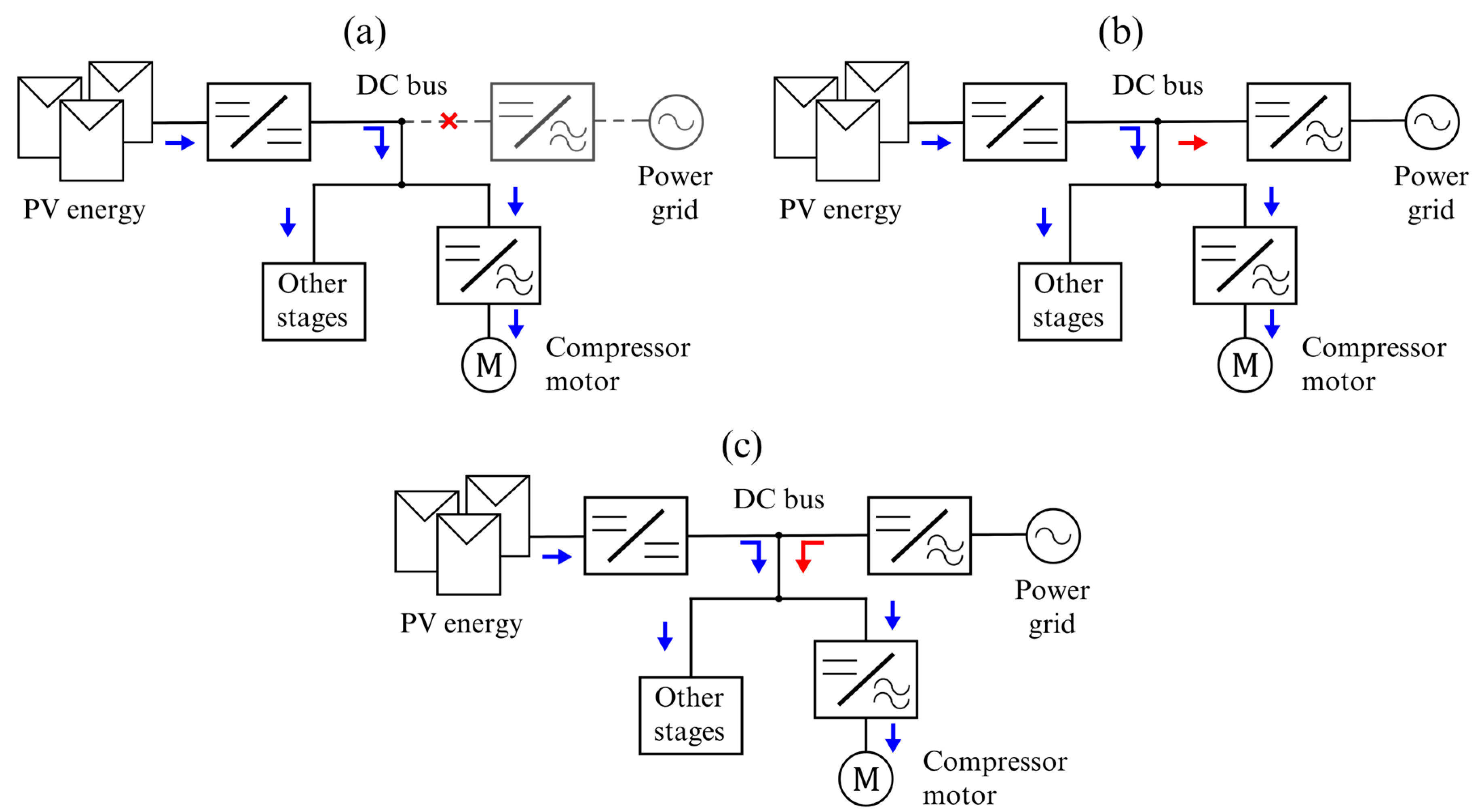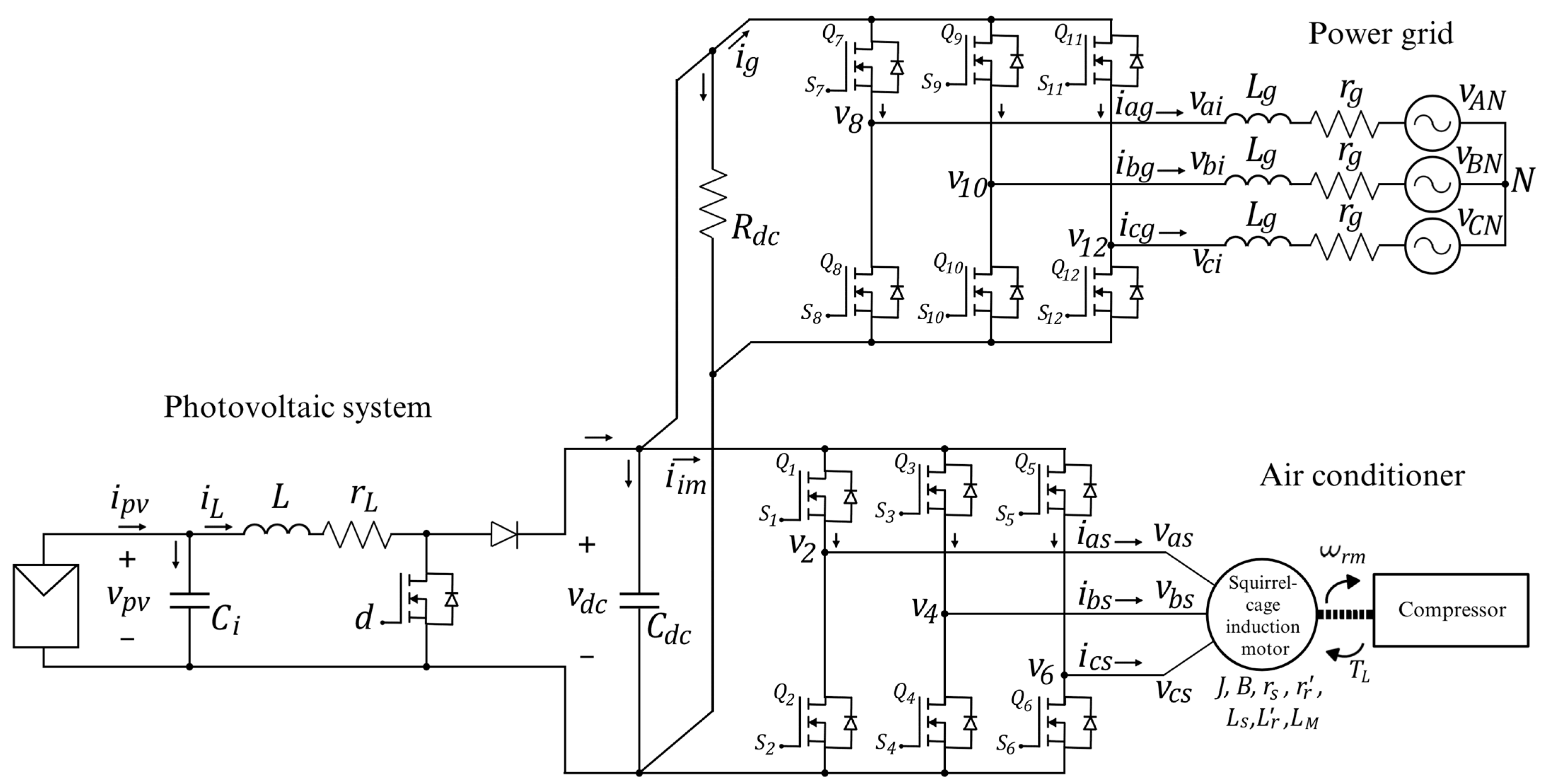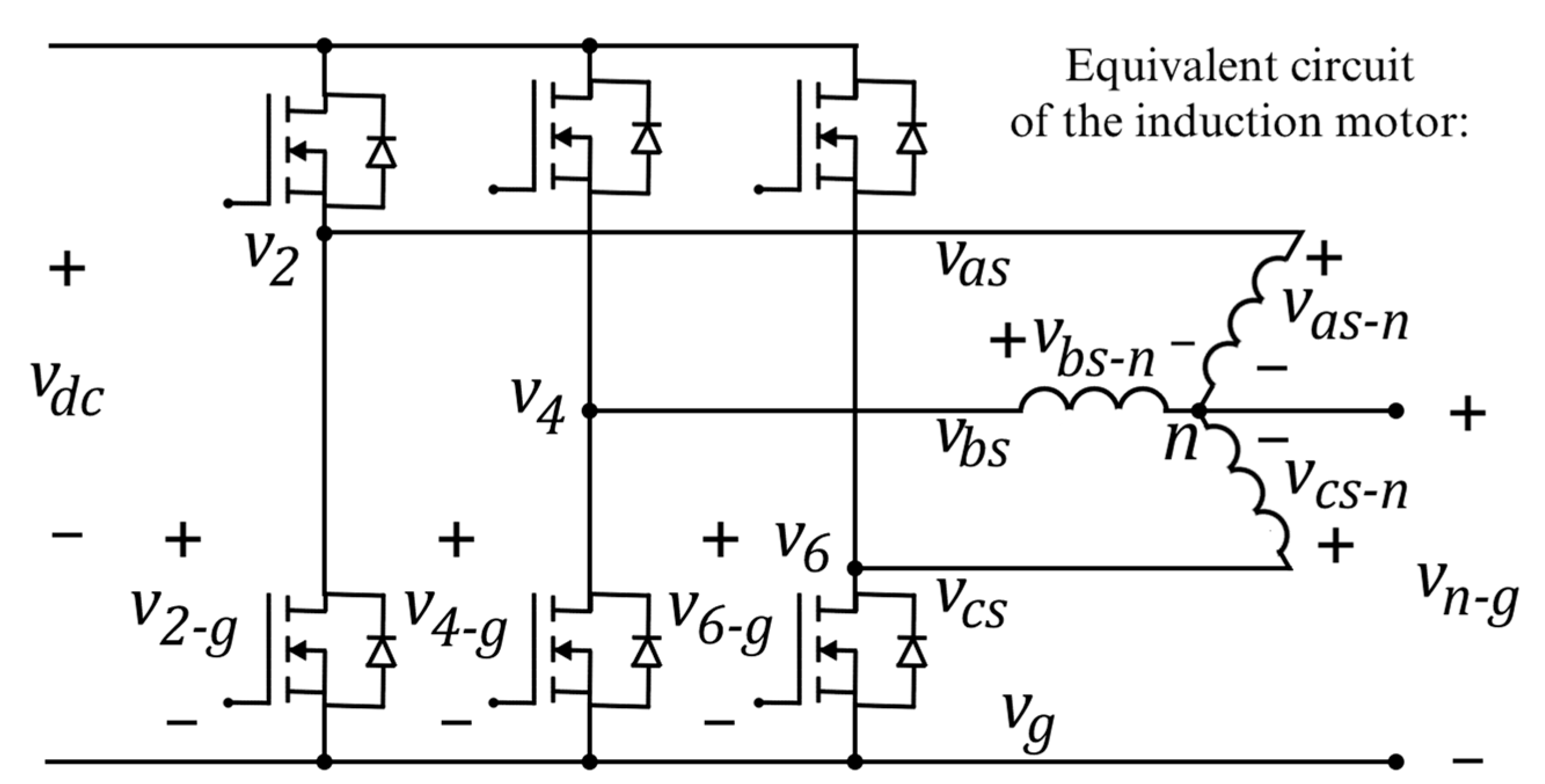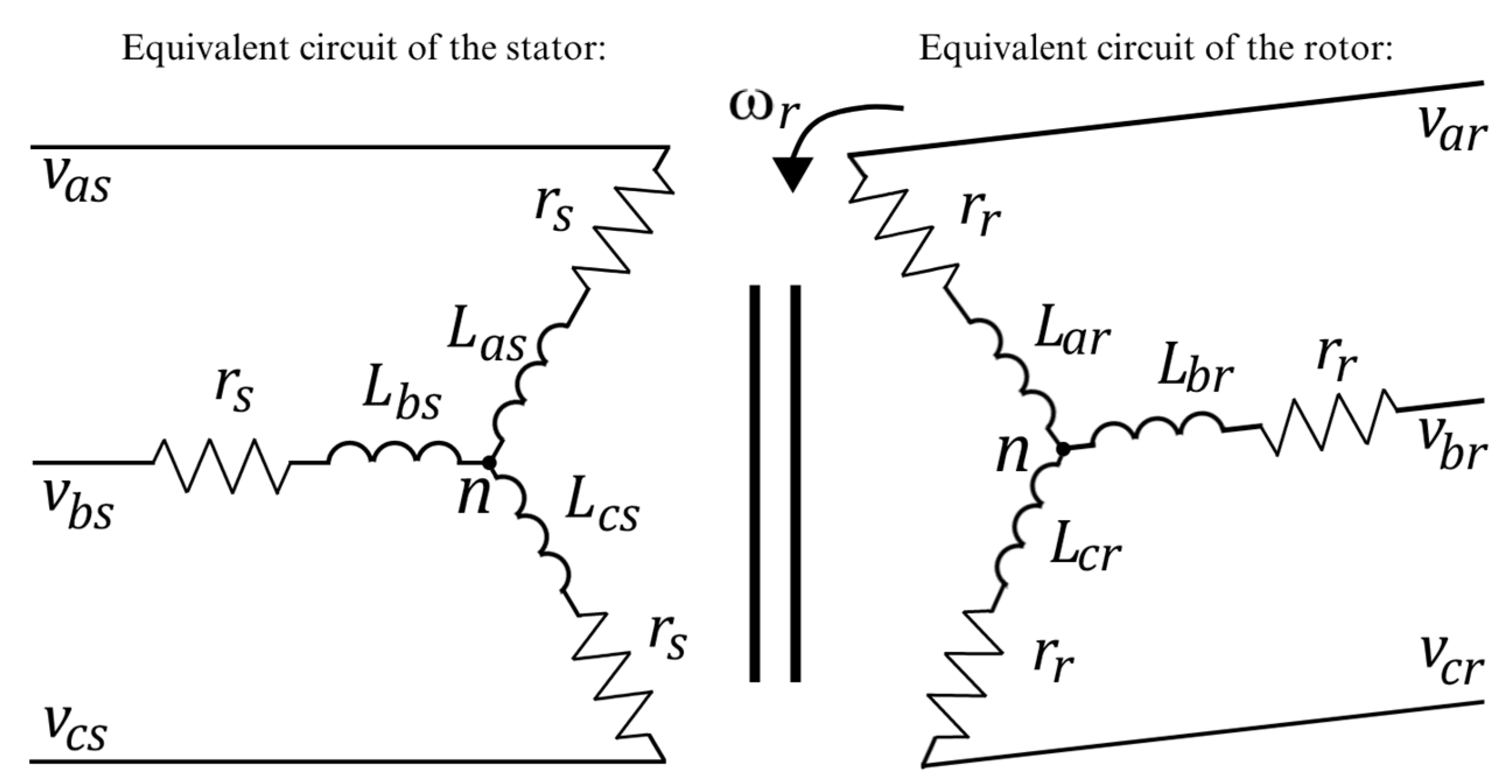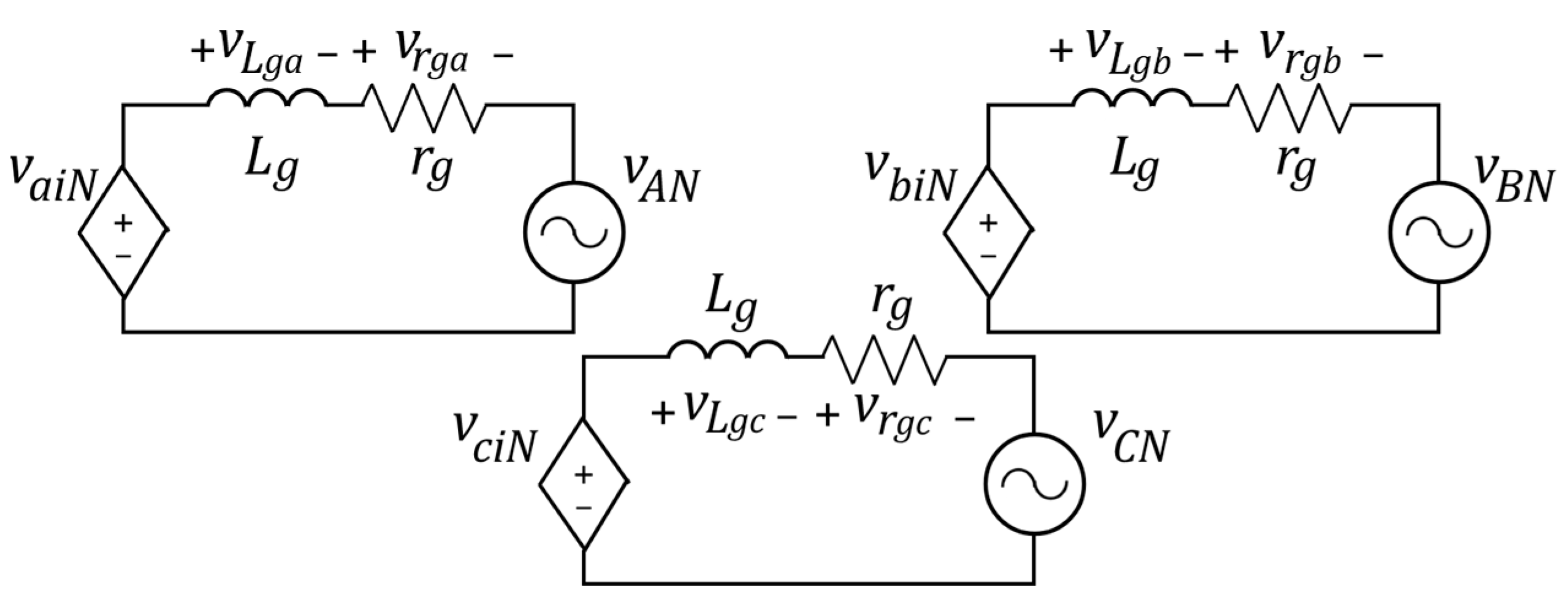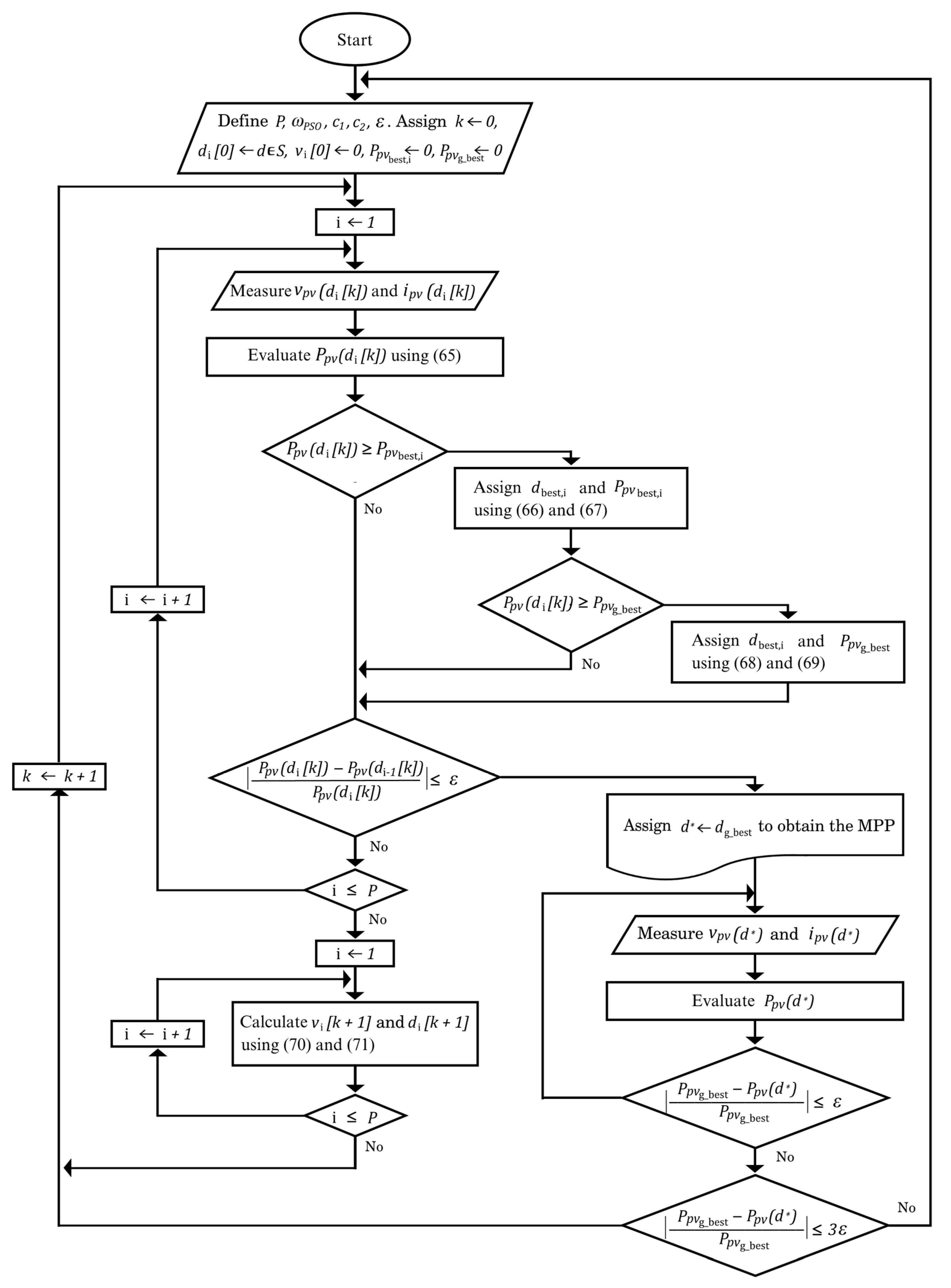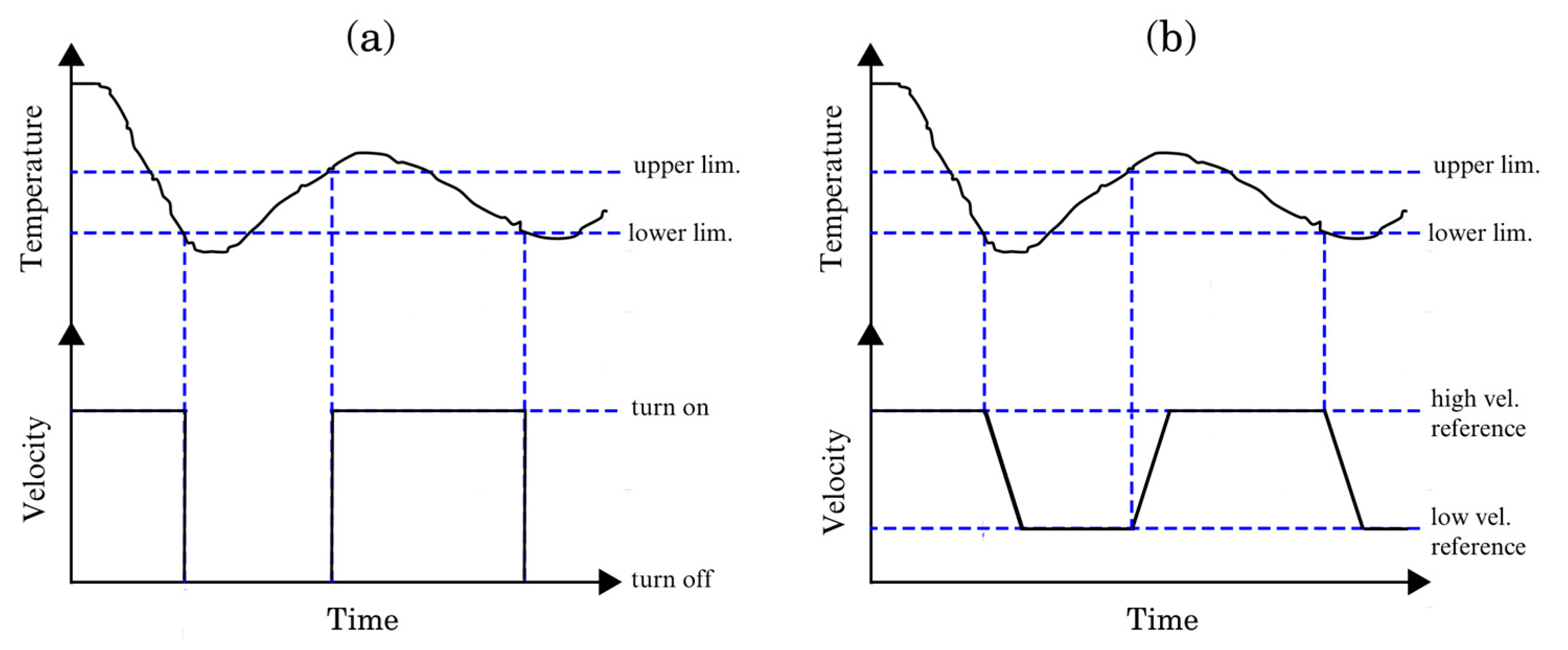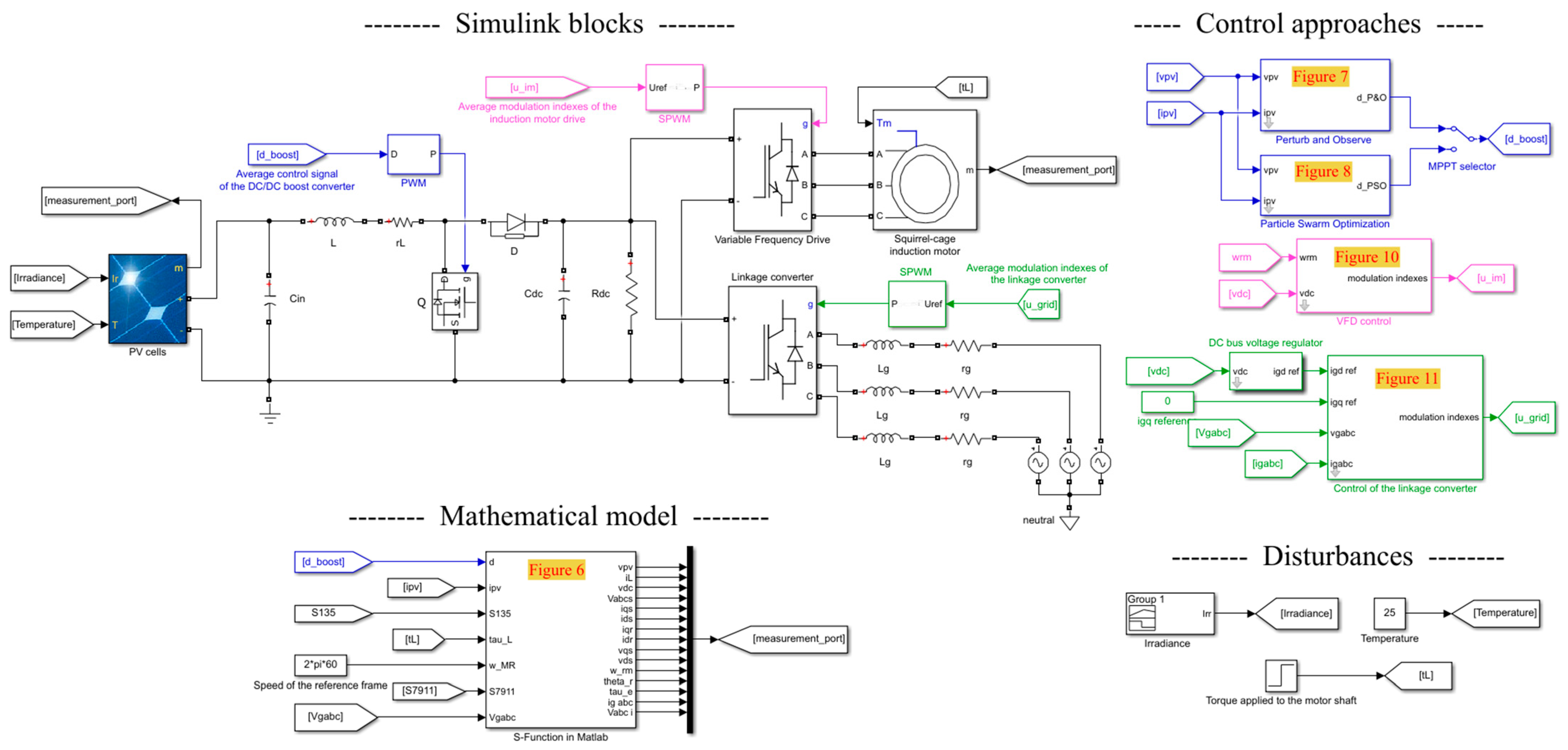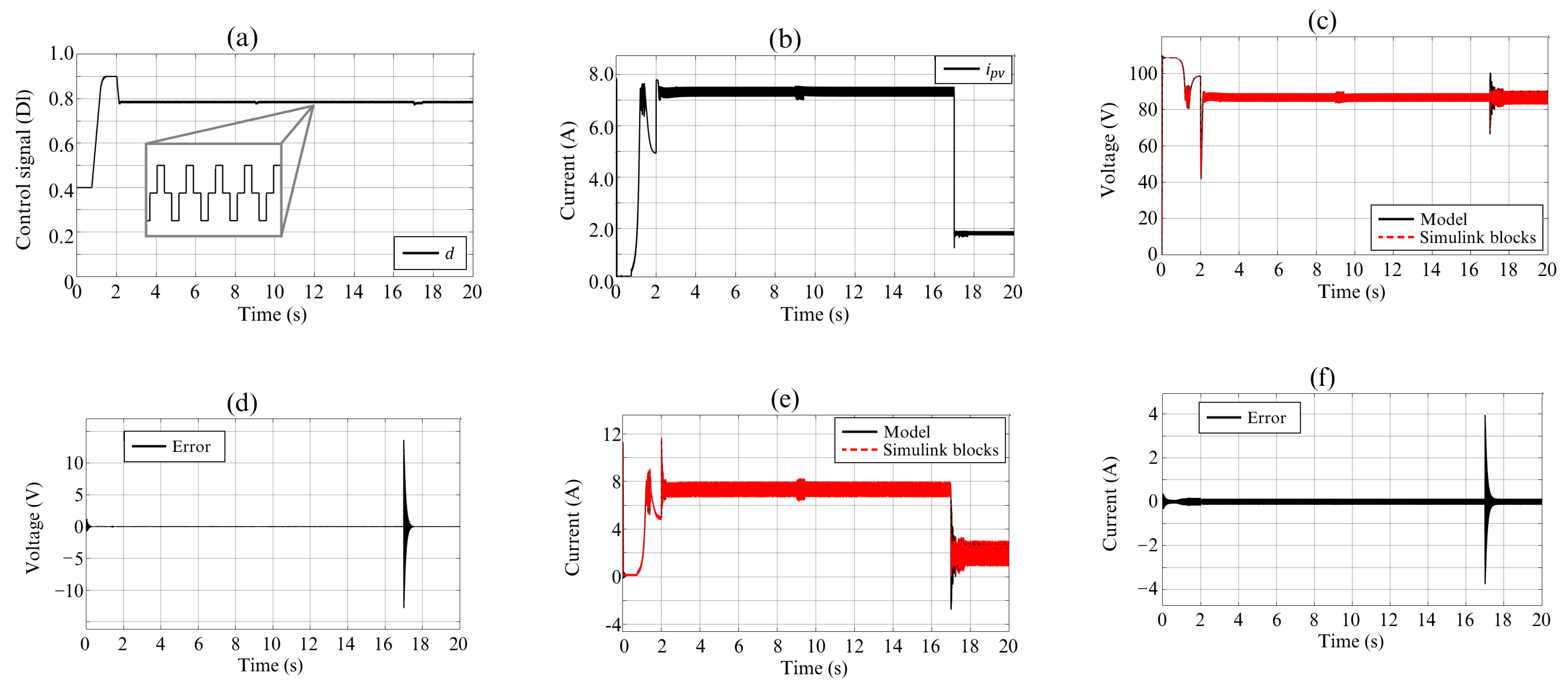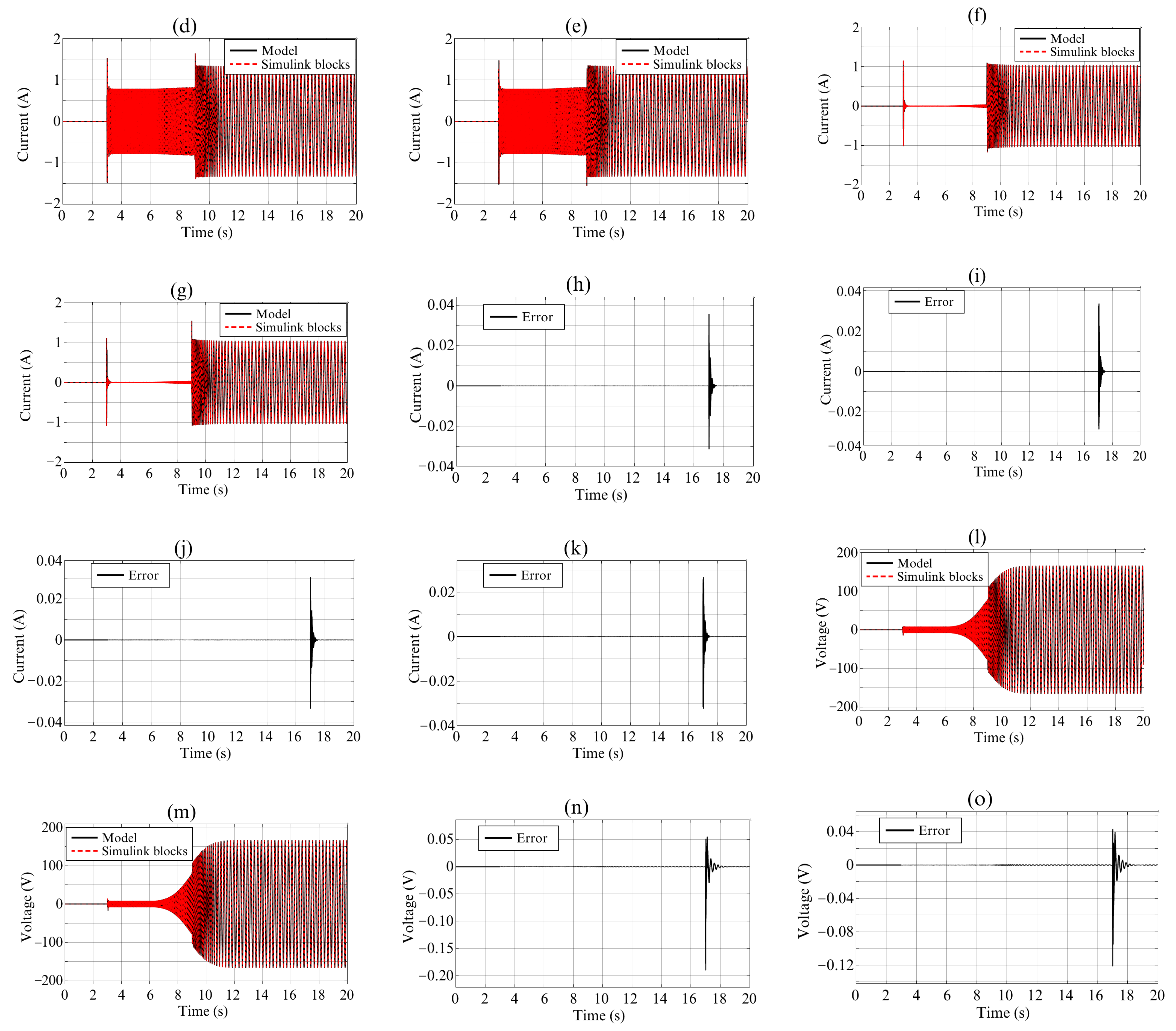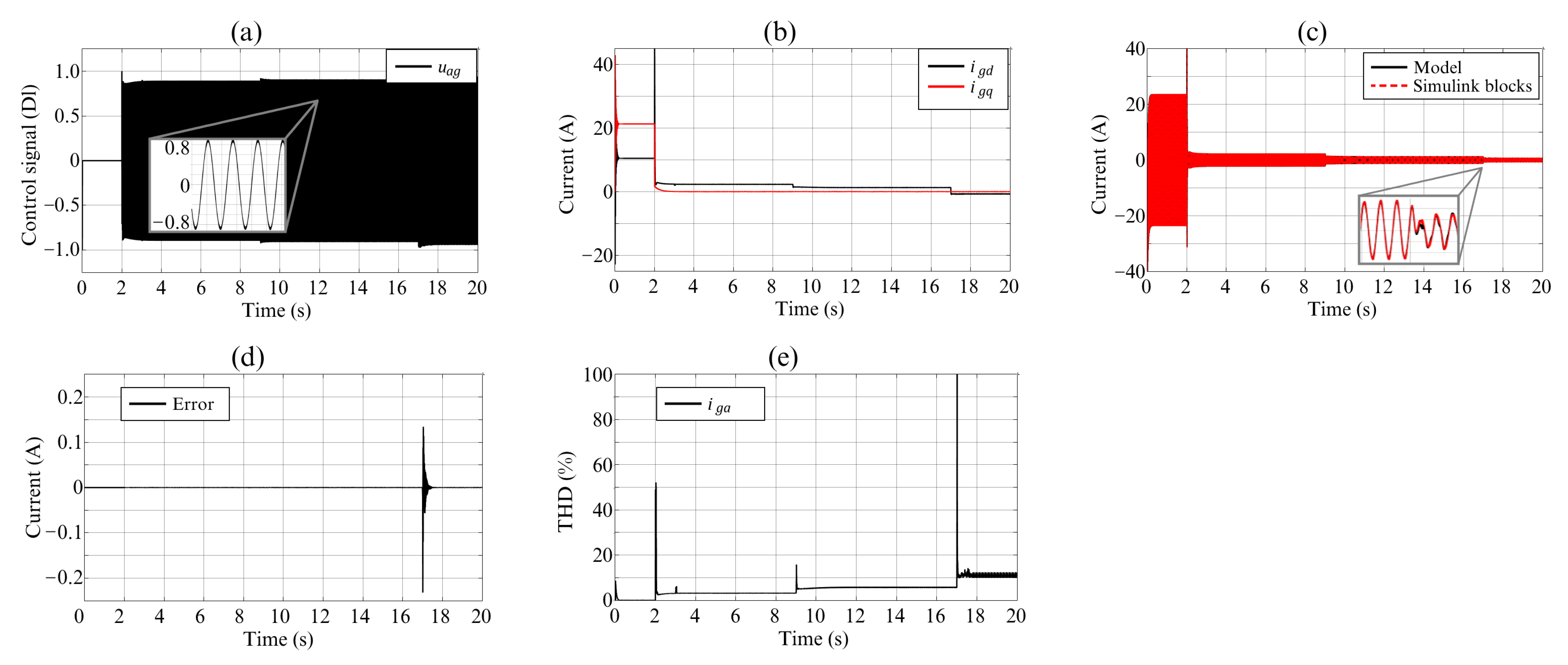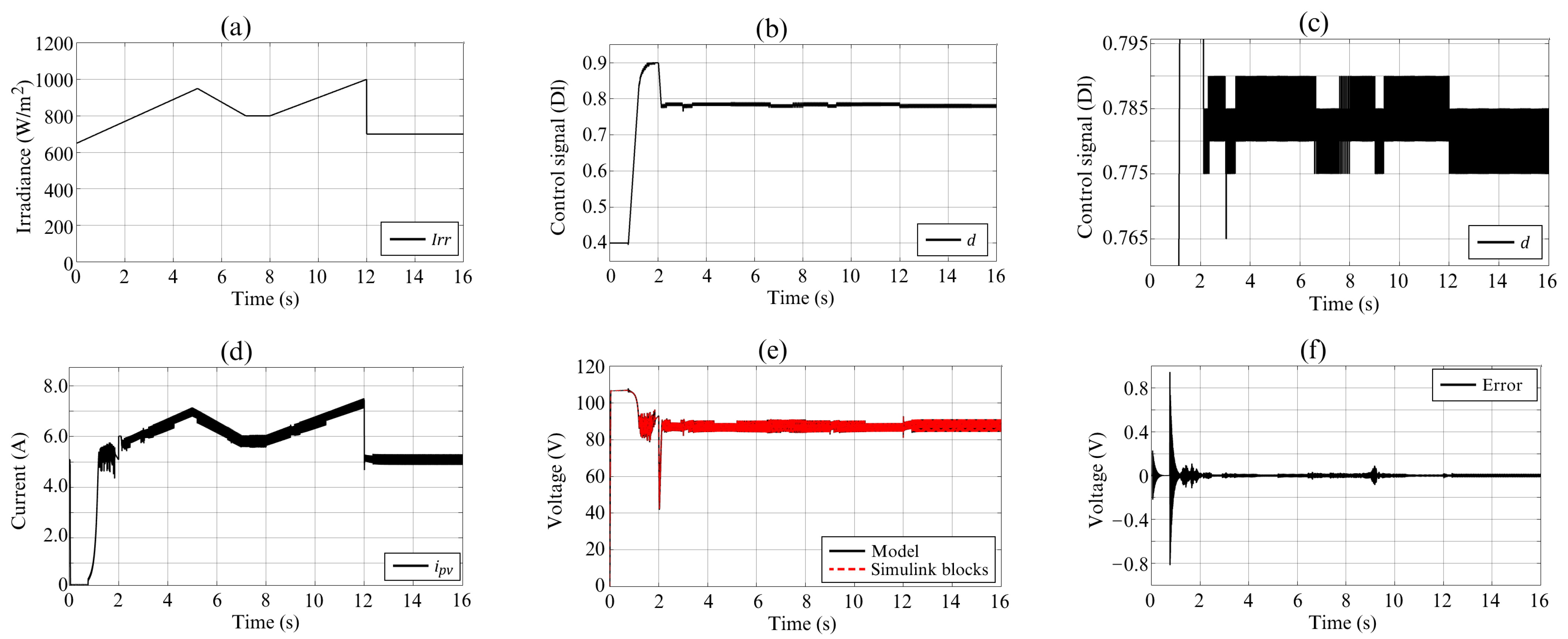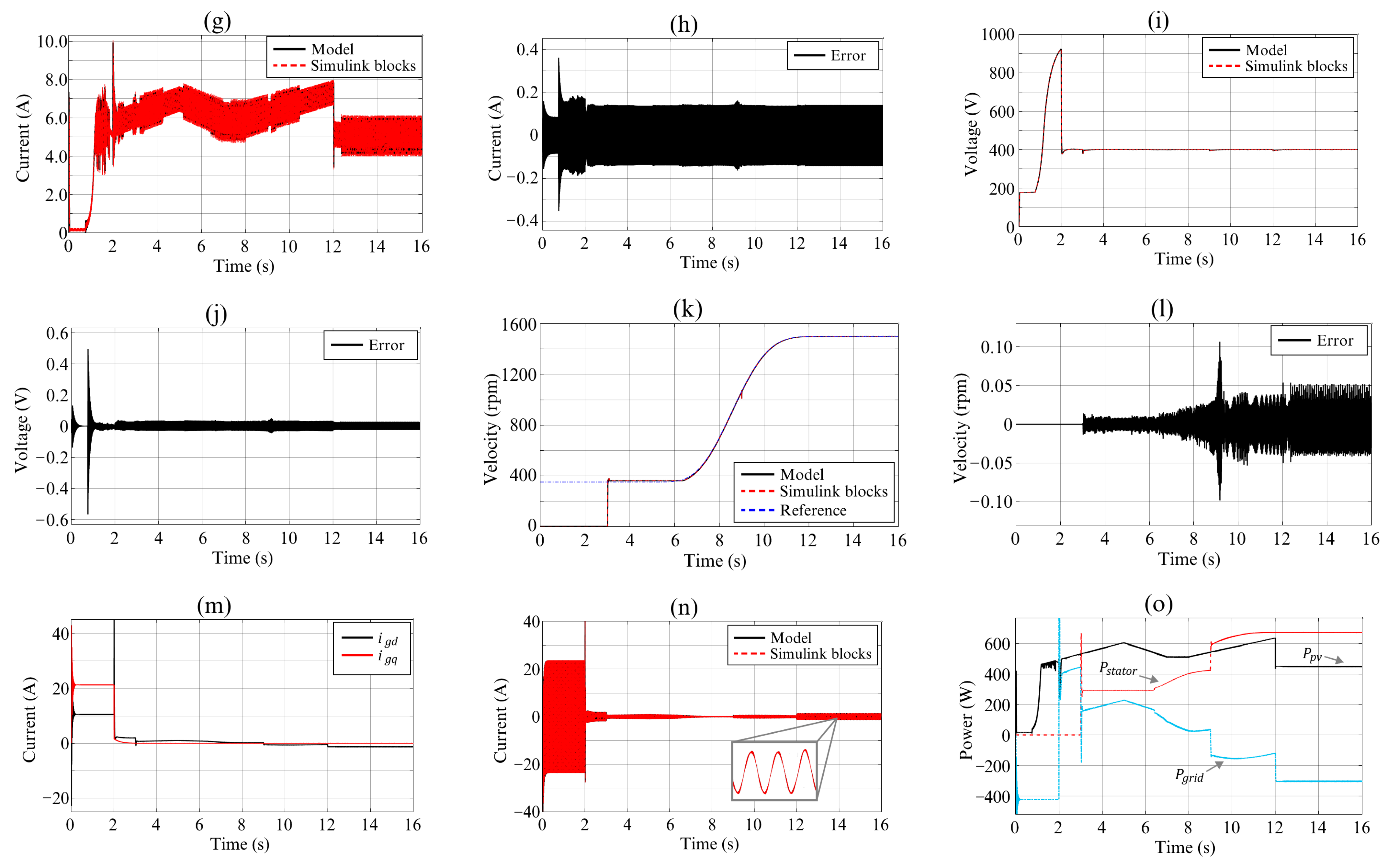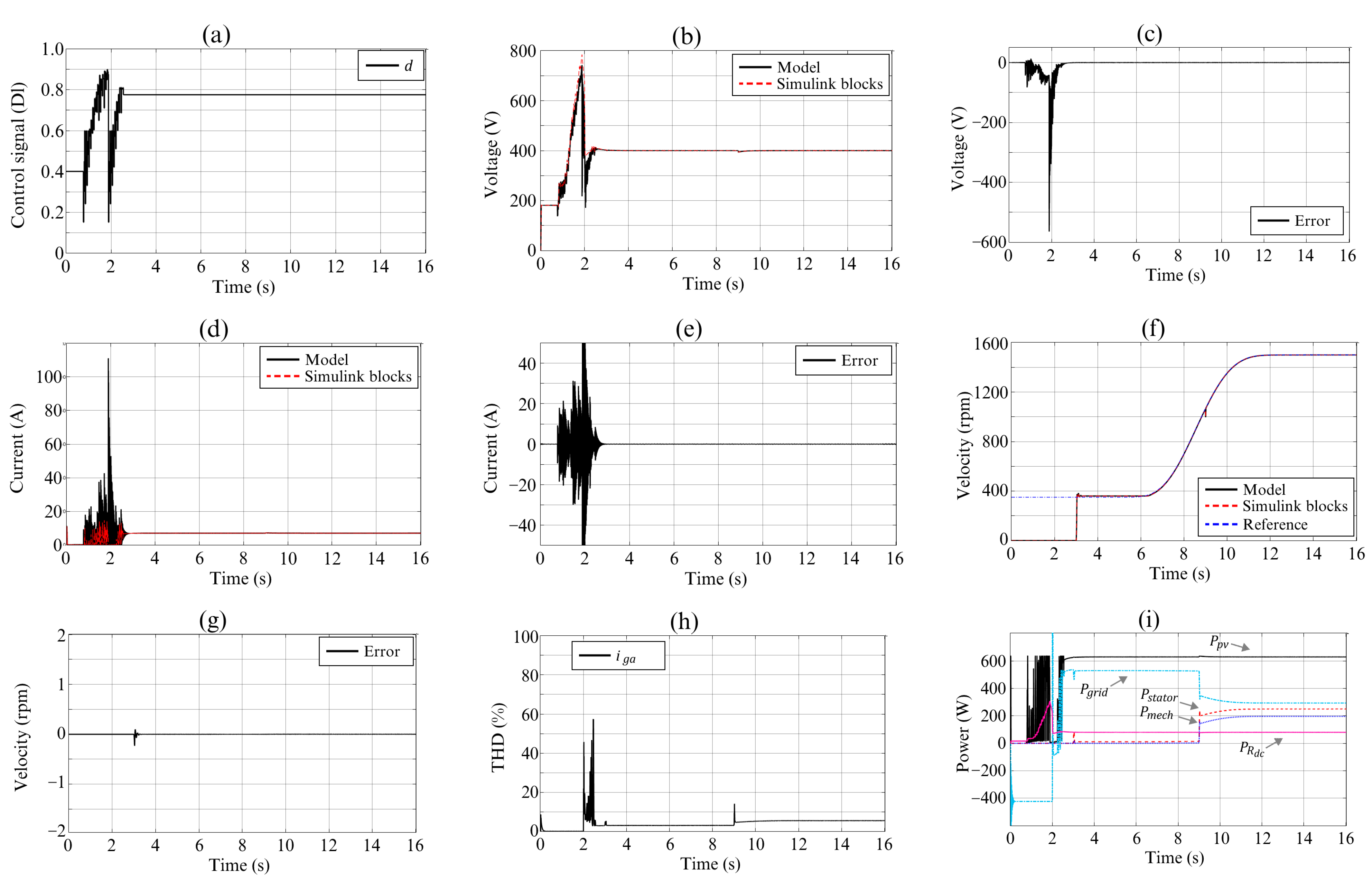1. Introduction
Renewable energies have become integral to everyday appliances that require the most energy from the electricity grid, such as air conditioners [
1,
2,
3]. These devices provide cooling, dehumidification, purification, and cleaning of the environment in an enclosed space. Integrating renewable energy into Heating-Ventilation-Air Conditioning (HVAC) systems provide several benefits. From an environmental point of view, it helps mitigate climate change caused by the dependence on fossil fuels for energy production. From a socially conscious point of view, the end user maintains comfort without needing technical knowledge of renewable energy issues. Finally, from an economic perspective, reducing the power demand on the power grid lowers operational costs.
In this sense, solar energy is the most appropriate because the highest temperatures coincide with the maximum intensity of the sun’s rays. Solar energy has been harnessed in air conditioning applications either by solar collectors as a thermal source [
4,
5] or by using photovoltaic (PV) cells to cover part or all of the electrical demands of the system [
6,
7]. Even existing works showed ideas to combine thermal and PV effects in the same device, called the solar-thermal-PV collector [
8,
9]. Refs. [
10,
11,
12,
13,
14,
15] have performed different techno-economic analyses between different methods of using solar energy in air conditioning, which showed that using only PV energy in these systems proves the most viable. Currently, relatively few works use solar PV energy to power an air conditioner, described below.
In [
16,
17], PV cells are connected directly to the compressor motor drive, as in water pumping applications. However, these systems require more flexibility and control of variables, such as temperature and humidity, which differs from water pumping. In addition, the available energy is dependent on incident solar radiation, which is ultimately economical but impractical. A solution to the dependency on environmental conditions is combining PV energy with other sources. In this case, a microgrid manages the energy balance among sources and loads. In [
18], the authors propose an AC microgrid consisting of PV cells, an inverter, a distribution box, and a control stage. As a result, the energy from the PV cells is transformed from DC to AC to power the air conditioner. However, these devices rectify the power from AC to DC for use in the compressor motor drive, transforming the power back to DC. Therefore, a more efficient way to harness the energy from PV cells is to avoid power rectification using a DC microgrid [
19].
In this sense, Refs. [
20,
21] presents an isolated DC microgrid consisting of the PV cells, the storage stage with its associated converter, the inverter, and the air conditioner. This configuration uses PV energy to cover the increased demand for the air conditioner and the storage stage as an auxiliary power source. The main drawback is that it needs to include that the storage stage also requires energy from the PV cells to charge the batteries, so more than the harvested energy may be required to cover both tasks.
Furthermore, Ref. [
22] proposes a DC microgrid for powering the air conditioner with PV energy and the power grid. The microgrid comprises the PV cells, a storage stage, the DC/DC boost converter, the rectifier, the power grid, and the compressor motor. In this system, there is only a unidirectional flow of energy, in this case, from the power grid to the DC bus of the microgrid. Finally, Ref. [
23] presents a DC microgrid interconnected to the grid consisting of PV cells, the power grid, and an air conditioner that combines energy sources internally. The disadvantage of this system is that it does not consider that the PV cells are a non-linear energy source and the harvested power depends on environmental conditions, omitting the tracking of the maximum power point.
Based on the above, this paper proposes the DC microgrid to power an air conditioner with solar PV energy and the power grid shown in
Figure 1. This configuration uses different power electronic converters: the DC/DC converter harvests maximum energy from PV cells. There are two DC/AC converters; one of them drives the compressor motor, while the other converter manages the power flow between the DC bus and the grid. In addition, other stages could optionally connect to the DC bus of the microgrid. The figure also shows three operation modes of the DC microgrid:
Operation mode I. In this operation mode, the compressor motor and other stages depend on the environmental conditions because PV energy is the only power source;
Operation mode II. The PV energy satisfies the demand of the air conditioner’s compressor motor; therefore, the grid absorbs the surplus energy;
Operation mode III. In this case, the PV energy is insufficient to power the loads, requiring the necessary power from the grid.
The state-of-the-art showed that a complete mathematical model of the proposed system is not available because these systems use specialized software tools to carry out the different control tasks. Therefore, the mathematical model stands out because many control approaches often require it to control the system without specific software. In addition, the complexity of the system requires the use of different controllers to accomplish tasks such as tracking the maximum power point of the PV cells, adjusting the velocity of the compressor motor, and supplying power from the grid to the motor when the PV system power is not sufficient, or transferring surplus power from the PV system to the grid if necessary. Therefore, the scientific contributions of this paper are: (i) to obtain and validate the integral mathematical model of the compressor power supply system of an air conditioner powered by solar PV combined with the power grid in a DC microgrid, and (ii) to show the design procedure to adapt the control approaches for the system’s tasks.
One of the advantages of mathematical modeling is that it allows a better detailing of the system’s dynamic behavior, including the interaction between the different stages that comprise it. In addition, the mathematical model of the system enables the use of control theories that require a more specific system model, avoiding non-mathematical models of the devices in particular software. Using these control theories will enhance system performance by improving its dynamic behavior, optimizing the system design, minimizing the value of the components, requiring fewer sensors, estimating signals, and canceling disturbances, among others. However, in this work, only the integral mathematical model of the system is obtained and validated, using sophisticated control approaches for future work. Furthermore, the control design procedure presents how the control approaches suit the system. In this case, control approaches are taken from the literature for the different tasks. Therefore, there is information to adapt the particularities of the control approaches for the proposed system.
The rest of the paper is organized as follows: the second Section shows the integral mathematical modeling of the proposed system; the third Section presents the control approaches and the design procedure used for the different system tasks;
Section 4 presents the validation of the obtained mathematical model using the Matlab/Simulink R2020b environment. Finally,
Section 5 presents the general conclusions and future work to be developed based on this proposal.
2. Modeling of the Air Conditioner Powered by PV Energy and the Power Grid
Figure 2 shows the proposed system consisting of the PV cells, the DC/DC boost converter, the DC bus with other stages considered as a load, a three-phase voltage source inverter as the motor drive, the three-phase squirrel cage induction motor, a three-phase DC/AC converter as the linkage converter, the inductive output filter, and the power grid. The modeling of this system requires the following considerations and restrictions:
The DC/DC boost converter operates in the continuous conduction mode;
The switches open/close immediately after their control signal is activated and no conduction losses in the semiconductors are considered;
The three-phase squirrel cage induction motor operates in the linear magnetic flux region, the stator windings are in a wye connection, and it is a balanced system;
The power grid is a balanced three-phase system.
First, the connection of the PV cells, the DC/DC boost converter, and the DC bus is analyzed, where
is the duty cycle of the converter;
is the voltage of the PV cells and the capacitor
;
is the current of the PV cells;
is the current of the inductor
and its parasitic resistance
of the converter;
is the voltage of the capacitor
and the DC bus;
represents other stages interconnecting in the DC bus. Applying Kirchhoff’s laws of voltage and current results in (1)–(3), where the values of
,
, y,
are design parameters; the current
and the control signal
are input variables;
depends on the other stages interconnected to the DC bus, but the value is considered known; and
and
currents are directed to the induction motor drive and the linkage converter, respectively. These variables are currently unknown, so they will be determined below by analyzing their interaction with the system.
The motor drive is a three-phase voltage source inverter comprised of three branches and six switches,
at the top and
at the bottom. The switching functions
control the switching on and off. The voltages
of each branch of the motor drive connect directly to the stator winding of the induction motor. In addition, the current
from (1) is expressed in terms of the currents of the switches
,
, and
as in (4).
Furthermore, the expressions of the stator phase-to-phase voltages are:
Table 1,
Table 2 and
Table 3 show the currents and voltages of the drive branches according to the switching functions
to
[
24]. As a result, (8)–(13) show the circuit switches’ behavior of currents and voltages obtained from the tables.
Substituting (8), (10), and (12) in (4) gives the current
in terms of the switching functions and the stator currents in (14).
In addition, (9), (11), and (13) are substituted into (5)–(7) to obtain the stator phase-to-phase voltages in terms of the switching functions and the DC bus voltage in (15)–(17).
The induction motor is internally wye-connected with a neutral n, as shown in
Figure 3. Therefore, the phase-to-ground, phase-to-neutral, and neutral-to-ground voltages have the relationship shown in (18)–(20), where
,
,
are the phase-to-ground voltages;
,
,
are the phase-to-neutral voltages;
is the neutral-to-ground voltage.
Now, adding the three terms and solving for
, the expression in (21) is obtained, considering that
because it is a symmetric machine.
Then, (21) is substituted into (18)–(20) and solved for the stator voltages.
The stator voltages are expressed in (25) regarding the switching functions and the DC bus voltage by substituting (9), (11), and (13) into (22)–(24).
Figure 4 shows the equivalent diagram of the stator and rotor of the induction motor, where the rotor rotates at a specific electrical velocity
. From this Figure, using Kirchhoff’s Laws results in the expressions of (26) and (27).
where
,
and
are the vectors of voltages, currents and flux linkages of the stator winding.
,
, and
are the vectors of voltages, currents and flux linkages of the rotor winding referred to the stator.
and
are diagonal resistive matrixes of the stator and rotor reflected in the stator, respectively. The resistive matrixes have the same resistance value,
and
Because it is considered a symmetrical machine. Furthermore, the flux linkages are expressed in terms of the currents in (28).
where:
is the stator inductance matrix,
is the rotor inductance matrix reflected in the stator, and
is the mutual inductance matrix reflected in the stator, where
and
are the stator leakage and magnetization inductances, and
the rotor leakage inductance reflected in the stator. The value of the matrix
varies by the relative motion between the rotor and the stator; therefore, its values vary according to the electric angular displacement of the rotor
, related in (29) to the electric angular velocity of the rotor
[
25].
As a result, (26) and (27) are expressed as:
Equations (31) and (32) show the relationships between positions and velocities in the rotor, where
and
are the electrical and mechanical angular positions of the rotor,
, and
are the electrical and mechanical angular velocities of the rotor, and
is the number of pole pairs of the machine. The resulting mathematical electrical model of the induction motor is shown in (33).
In (34)–(36), the mechanical relationships of the machine are shown, where
and
are the coefficients of inertia and viscous friction, respectively, and
is the external load torque applied to the motor shaft.
The electrical model in (33) is in an
framework. However, the
framework is generally preferred because it facilitates control tasks. Hence, the transformation matrices (37) and (38) are used for the stator and rotor, respectively.
with:
The reference framework change uses the Park transformation to transform a three-phase signal
to a two-phase orthogonal rotating reference frame
. In this case,
and
are the transformation angles, with the difference that
also considers the rotor motion
. The transformation angles have arbitrary values depending on the transformation purposes and control objectives. For example, the stationary reference framework aligns the
framework’s phase
axis with the phase
axis of the
framework. It is worth mentioning that it is more convenient to mention reference frame rotation speeds instead of angles in the reference framework change. In this case, the reference frame rotation speed is given by (40).
As a result, Equations (41) and (42) transform the
framework into the
reference frame.
where
and
are the vectors representing
as any voltage, current, or flux linkage of the stator.
and
are the vectors representing
as any voltage, current, or flux linkage of the rotor referenced to the stator. As a result, expression (43) shows the mathematical model of the three-phase induction motor in the
reference frame.
The
to
transformation does not affect the mechanical equations; therefore, (35) and (36) remain unchanged. However, the electromagnetic torque is affected by its electrical part. Consequently, Equation (44) shows the electromagnetic torque in the
reference frame, where
is the mutual inductance defined in (45).
Therefore, if the stator voltages and the external load torque are known, the mechanical angular velocity , the electromagnetic torque , and the stator and rotor currents are determined. The above implies that the motor currents from (14) and the current from (3) are now known. However, the linkage converter’s current has not yet been determined.
The linkage converter has six switches
controlled by switching functions
. In this case, the voltages between each branch are
,
, and their output currents are also the grid currents
,
. The current
is expressed in terms of the currents of switches
,
, and
as:
While the expressions of the phase-to-phase linkage voltages are:
Table 4,
Table 5 and
Table 6 show the behavior of the switch currents and voltages regarding the switching functions
[
24]. Based on the tables, Equations (50)–(55) show the switch behavior as a function of the grid currents and the DC bus voltage.
Equations (50), (52) and (54) are now substituted into (46) to express the current
in terms of the switching functions and the grid currents.
The branch voltages of the linkage converter are obtained in (57)–(59) by substituting Equations (51), (53) and (55) into (37)–(39).
While the phase voltages are expressed in (60), considering a symmetrical and balanced power grid configuration.
In the same way, the dynamics of the grid currents are obtained from
Figure 5 and shown in (61)–(63).
The development of this section allowed obtaining the mathematical model of the proposed system in
Figure 2. As a summary,
Figure 6 shows the interaction between the model equations where:
The required inputs are the PV cells current , the duty cycle of the DC/DC boost converter , the drive switching functions ,, the reference frame rotation speed , the applied load torque , the linkage converter switching functions , the grid angle and its voltages , , and ;
The outputs are the PV cell’s voltage , the inductor’s current , the DC bus voltage , the stator voltages, the stator and rotor currents in the and frameworks, the electromagnetic torque , the mechanical angular velocity , the electric rotor position , the linkage voltages , and the grid currents in the frameworks and .
The established mathematical model of the system in this section will be validated through simulations in the Matlab/Simulink environment. However, defining the control approaches to control the system adequately is necessary.
